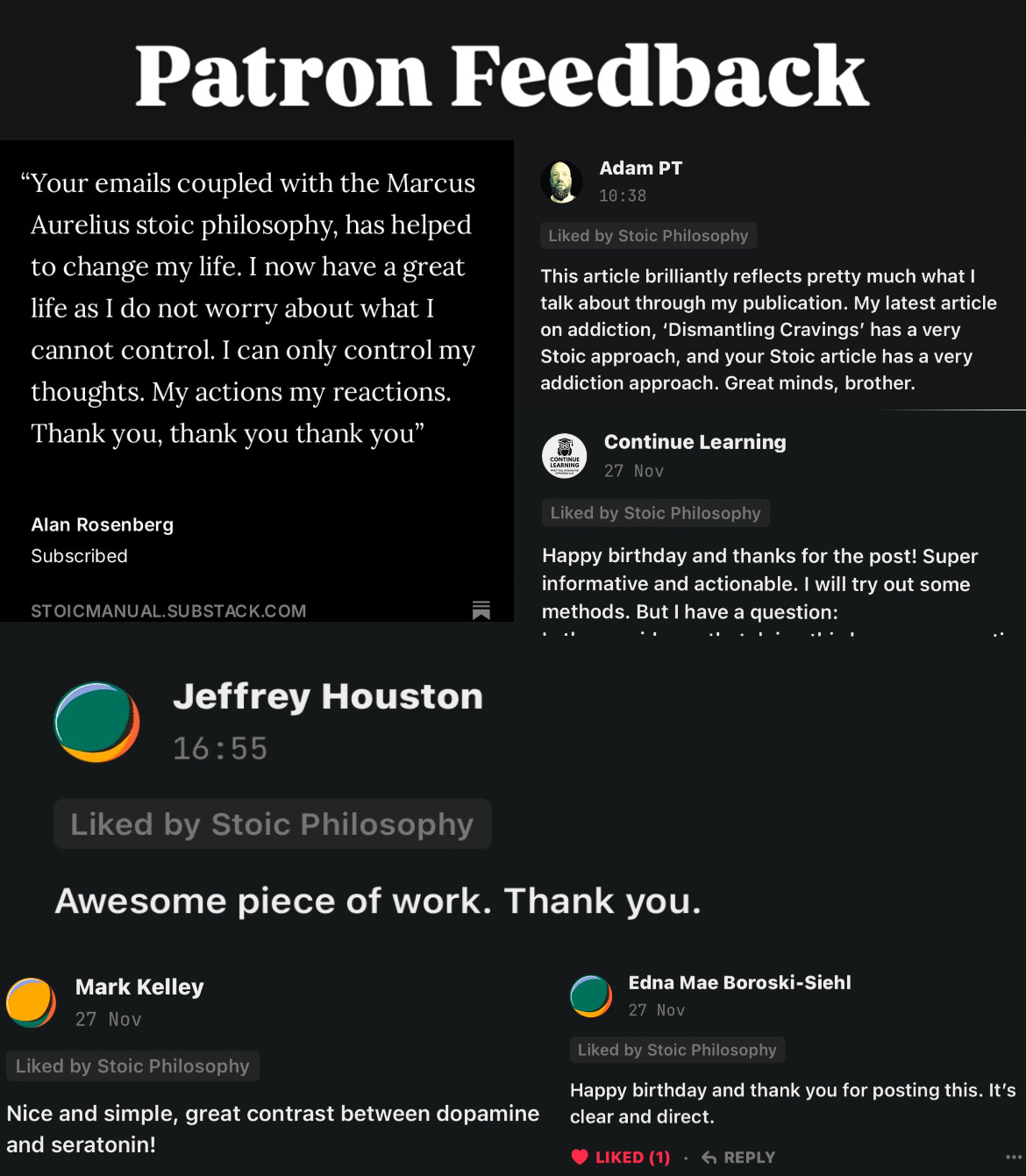#9. The Neuroscience of ADHD & How to Focus
Hyperfocus highlights that ADHD is not simply a deficit of attention but a dysregulation of attention.
The ‘Neuroscience-based Tools’ section is a companion for The Stoic Manual to help you become wealthier, happier & more powerful by boosting your resilience, drive, mood, motivation, relationships, focus, and overall health—by Dr. Antonius Veritas. Complement this with the ‘Lead to Win’ section.
P.S: Scroll to the end for a mini-course, a step-by-step guide, on how to manage ADHD & focus to get things done. This information is worth $3,000.
Why does focus matter?
Because it’s the foundation of everything you desire.
It’s the driving force behind wealth creation, granting you the ability to solve problems, innovate, and achieve your career ambitions.
It’s the fuel for power, enabling you to lead with clarity and make impactful decisions.
And most importantly, it’s the pathway to happiness, helping you savor the present moment, deepen relationships, and align your actions with your values.
The challenge?
Modern life, with its endless notifications and demands, actively works against your ability to focus.
Whether it’s due to the fast-paced world we live in or conditions like ADHD that disrupt attention, reclaiming control over your mind is the first step toward thriving in every aspect of your life.
Fortunately, science offers answers.
Breakthroughs in neuroscience reveal how attention works, the hidden role of dopamine in maintaining focus, and actionable strategies to build attentional strength.
This article explores these insights and provides tools to help you reclaim your attention, elevate your productivity, and design a life that’s both purposeful and fulfilling.
Read on to discover how you can sharpen your focus to transform your life, elevate your productivity, and get closer to the success and happiness you deserve.
Other Resources
Understand Focus
Focus, attention, and impulse control are interconnected yet distinct concepts that shape how we interact with the world.
Attention is the deliberate act of selecting specific sensory inputs to bring into conscious awareness.
While your sensory systems continuously process sounds, visuals, and textures, attention filters this flood of data.
This filtering allows you to focus on particular inputs, like the ticking of a clock or someone’s voice amid background noise.
Impulse control complements attention by suppressing distractions and irrelevant sensory stimuli.
Both processes depend on complex neural circuits and are significantly influenced by dopamine.
Dopamine, often called the "motivation molecule," acts as a neuromodulator that sharpens focus.
It enhances specific neural circuits, creating a tunnel-vision effect for better concentration.
Low dopamine levels result in aimless attention and increased susceptibility to distractions.
This duality illustrates how dopamine underpins not only motivation but also effective concentration.
Neuroscientists have identified two critical brain networks that govern attention: the default mode network (DMN) and the task-positive network (TPN).
The DMN is responsible for mind-wandering and introspective thinking.
In contrast, the TPN manages goal-oriented, focused tasks.
In a healthy brain, these networks function in a see-saw pattern, where one activates as the other quiets down.
This balance allows for smooth transitions between introspection and action.
Disruptions, such as low dopamine or chronic overstimulation, can upset this balance.
Such imbalances may lead to impaired focus or persistent mental chatter.
This interplay between brain networks becomes particularly relevant when understanding ADHD.
Understand ADHD
ADHD, or Attention Deficit Hyperactivity Disorder, is a neurodevelopmental condition marked by patterns of inattention, hyperactivity, and impulsivity.
These patterns are strong enough to interfere with daily functioning.
ADHD differs from occasional lapses in focus due to structural and chemical differences in the brain.
Research shows that individuals with ADHD often have dysregulated dopamine and adrenaline systems.
This dysregulation impairs the synchronization of key brain networks like the DMN and TPN.
When these networks fire simultaneously, they create internal chaos, making it hard to filter distractions.
This lack of synchronization also hinders smooth transitions between introspection and task-oriented focus.
A paradoxical feature of ADHD is hyperfocus, where individuals achieve intense concentration on stimulating or rewarding tasks.
Hyperfocus highlights that ADHD is not simply a deficit of attention but a dysregulation of attention.
This dysregulation makes it difficult to control where and when focus is applied.
Lessons from ADHD
ADHD offers valuable insights into the role of dopamine in driving focus.
It also underscores the influence of external factors like diet, stress, and sleep on attention.
For example, insufficient sleep or poor dietary habits can worsen attentional difficulties.
Smartphones, which induce frequent dopamine surges, can mimic ADHD-like symptoms in individuals without the condition.
Understanding ADHD helps us uncover strategies to enhance focus for everyone, regardless of diagnosis.
Barriers to Focus
Modern life presents unique challenges to sustained attention.
Smartphones, multitasking, and information overload pull us in multiple directions.
Frequent dopamine hits from notifications condition our brains to crave instant gratification.
This undermines our ability to focus on long-term goals.
Lifestyle factors like poor sleep, high-sugar diets, and lack of exercise further exacerbate attention deficits.
Sleep deprivation disrupts the brain’s ability to regulate the DMN and TPN, leading to increased distractibility.
Similarly, diets high in simple sugars cause energy crashes, making it harder to sustain attention.
Incorporating healthy habits and managing dopamine exposure is essential for overcoming these barriers.
Action Guide: Practical Steps to Master ADHD & Enhance Focus
This guide integrates detailed, science-backed strategies to help you master your focus and attentional control.
Each section offers expanded insights and actionable steps to ensure a comprehensive approach to improving attention and productivity.
Let’s get into it…
Do you like this entry so far? ⭐️
Support the publication to read the rest and access 100+ premium essays, neuroscience-based tools & meditations.
Join 10,000+ other readers.
What my supporters are saying…











